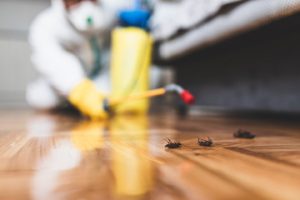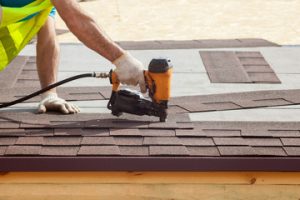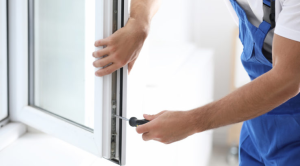Pest Control Basking Ridge NJ prevents and eliminates pests to protect people, property, and the environment. This can be done by using physical, mechanical, and biological methods.
Continuous or migratory pests usually require ongoing, regular pest management. Sporadic or potential pests may only require control under certain circumstances.

Pests cause a variety of problems that threaten public health, property and the environment. Some, such as plant diseases and rodent droppings, can affect food supply, while others, such as cockroach allergens and mosquito bites, trigger asthma attacks and other allergic reactions. Pest control is essential to maintain a safe and sanitary living and working environment for homes, businesses and facilities.
The first step in pest control is prevention. This includes identifying and sealing entry points to structures, regularly inspecting the facility, keeping the area free of debris and garbage, storing food in sealed containers and disposing of waste properly, and reducing places where pests breed and hide. It also involves educating building occupants on proper pest management practices.
Many pests are attracted to food, water and shelter, and some can enter a home or business through small cracks or gaps. Taking steps to reduce these conditions will help prevent pest infestations. For example, removing clutter, regularly cleaning kitchen benches and storing food in sealed containers will discourage pests from entering the residence or business.
Eliminating standing water, checking for and repairing leaky plumbing, and cleaning up food scraps and garbage will also help prevent some pest infestations. Regular inspections will allow pest problems to be identified early and action taken before the infestation becomes severe.
Clutter can attract pests, as can old newspapers, magazines and cardboard. It is important to get rid of these items to eliminate pest hiding spots.
Regular trash collection and the proper storage of garbage will help prevent pests. Pests such as flies, ants and rodents spread germs on food-preparation surfaces and can contaminate food products. Effectively controlling these pests will improve food safety and hygiene in restaurants and other commercial establishments.
It is important to choose and use pesticides carefully, ensuring that they are designed for the specific pest being targeted and that the instructions on the label are followed closely. Otherwise, other insects or animals that are not the target of the pesticide may be harmed. This is why the decision to use a particular pesticide must always be based on an objective evaluation of the benefits versus the risks.
Suppression
Pest control methods can be natural, biological, chemical, cultural, mechanical or physical. Natural controls, such as weather or topography, limit the number of pests by making environments unsuitable for them. Biological controls use natural enemies to injure or consume pests and reduce their numbers. Chemical controls, such as plant hormones and fertilizers, kill or suppress pests through direct action or by making plants or their hosts less desirable. Mechanical and physical controls make conditions unsuitable for pests by physically removing or altering their access to the resources they need, including water, food and shelter.
Preventing a pest problem is the best way to reduce costs and risks to people, property, crops or other organisms. Prevention methods include physical modifications to growing sites, such as barriers or berms. They also include planting species or varieties that are resistant to a specific pest, such as sterile cultivars of garden vegetables. Other preventive measures include limiting access to food, water or shelter through physical barriers, such as fences and netting.
Biological pest control uses natural enemies to injure or consume pests, such as predatory insects, parasitic plants or pathogens. These organisms can be introduced from elsewhere in the world, or (more commonly) augmented by increasing their population in an area. Often, this is done by releasing predators or parasitoids that have been bred in the laboratory. The process is carefully planned to ensure that the new enemies are released at a time when they can effectively control the pest, and when other native organisms of the same type (not pests) are not affected by their presence.
Some ecosystems have natural enemies that can reduce pest populations through predation or competition, such as birds, amphibians, reptiles, fish, mammals and other vertebrates that feed on insects. Many predatory insect species, such as lady beetles, ground beetles and rove beetles, parasitic wasps and flies, and soil invertebrates, such as earthworms and nematodes, can significantly reduce pest populations when their numbers are sufficient. Other natural enemies of pests are fungi, which can infect or destroy plant tissues, or nematodes that can damage or kill insect eggs and larvae.
Eradication
Pest control involves preventing and eliminating the presence of pests, whether they are insects, birds, rodents or weeds. This can be achieved by spraying a building with chemicals that kill or repel the pests, trapping them with physical barriers, putting up barriers to their access to food and water sources or simply cutting off their ability to reproduce. Pest control also includes the inspection of food shipments and the removal of attracting items like garbage cans or cardboard boxes that could encourage pests.
A last resort for a problem that has not responded to other treatments is chemical pest control. This may include herbicides to kill weeds, insecticides to kill insects and fungicides to manage diseases. It is important that any pesticide be used only as directed on the label. If a pesticide is not used correctly, it may cause the pests to become resistant to the treatment. This can be a significant problem for the sustainability of any management approach.
Some pests have a fearsome or grotesque appearance, such as spiders, silverfish and earwigs. Others bite or sting, such as bed bugs, fleas, cluster flies and mud dauber wasps. Still others contaminate food or personal belongings, such as mice, rats, cockroaches, ants and clothes moths. Some have destructive behaviour, such as wood-destroying organisms and termites.
Biological control, sometimes called biocontrol, is a method of managing pest animals (insects and mites) or plant pathogens through the use of other organisms. It can be done on its own or as part of an integrated pest management program. Predation, parasitism and competition are natural mechanisms that help to reduce pest populations. They can be used in combination with other management techniques, such as the use of plant growth regulators or crop rotation.
Eradication of a disease occurs when it is no longer endemic in any particular region. This means that the disease no longer naturally occurs or circulates within that region, and any cases of it that occur are imported from outside the area. Smallpox and rinderpest are examples of diseases that have been eradicated from the world. However, samples of the viruses that cause these diseases still exist in laboratories around the globe.
Treatment Sites
Many pest problems can be managed without the use of chemicals. Inspecting and monitoring for signs of infestation is an important first step. Insect sampling techniques (cup cutting, soil diggings) complement visual inspections and provide valuable information on insect abundance and damage potential. Sampling also provides data that can be used to select the best control method and determine treatment effectiveness.
Some pests, such as cockroaches, ants, rodents and mosquitoes, can spread diseases that cause discomfort, injury or even death. Their droppings may also create allergic reactions in some people and contribute to poor indoor air quality.
In addition, some pests can damage buildings or structures, such as termites, hornets and wasps. Infestations may devalue property, disturb tenants and employees, and contaminate surfaces. The presence of pests can also affect a business’s reputation.
Physical barriers, such as screens or fences, can keep pests out. Sealing cracks and crevices, keeping grounds mowed and dry and providing trash receptacles with tight lids are other preventive measures. Indoors, regular cleaning, vacuuming and mopping of floors and removing food scraps from storage areas can reduce the number of pests.
If pests occur, they must be promptly treated to minimize damage and prevent infestations from spreading. Proper pest identification is crucial; different species have different life cycles and behaviors. Knowing what to look for, such as fecal matter and egg shells, helps prevent misidentification.
Treatment options include limiting access to food and water with traps, baits and pheromone lures, and closing doors or windows. Other pests, such as stinging insects, can be controlled by physical removal or repellents.
When chemical controls are used, they should be selected carefully. Be sure to follow all instructions on the product label. Using more than recommended amounts of pesticides can be dangerous and ineffective. Children, older adults and those with compromised immune systems are particularly susceptible to harm from improper pesticide use.
When selecting a pest management professional, ask to see their license, copies of pesticide labels and a description of the application rates at which they plan to spray. Reliable pest control companies will have these documents readily available.



